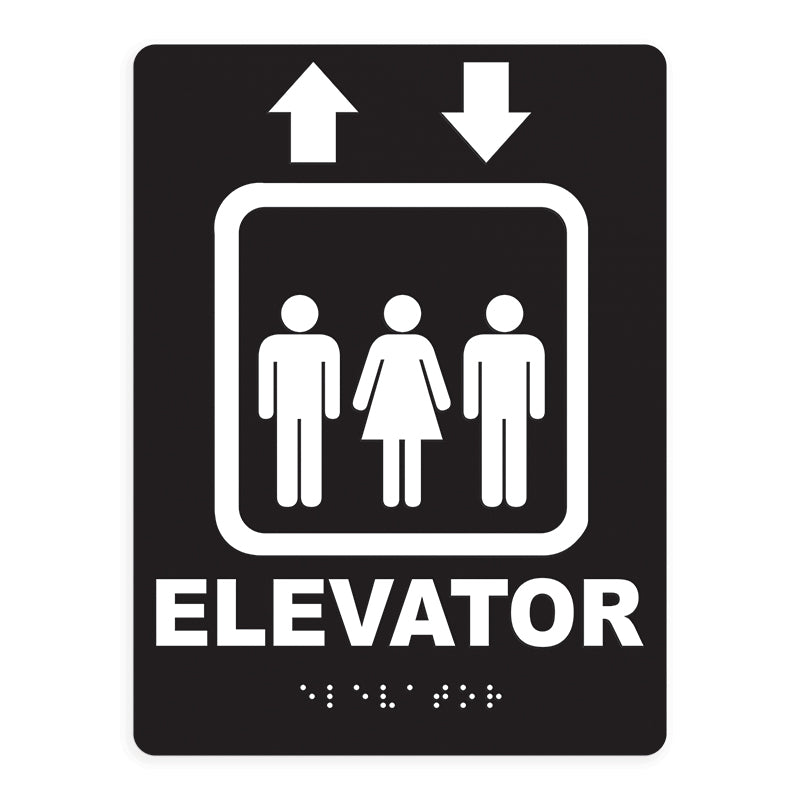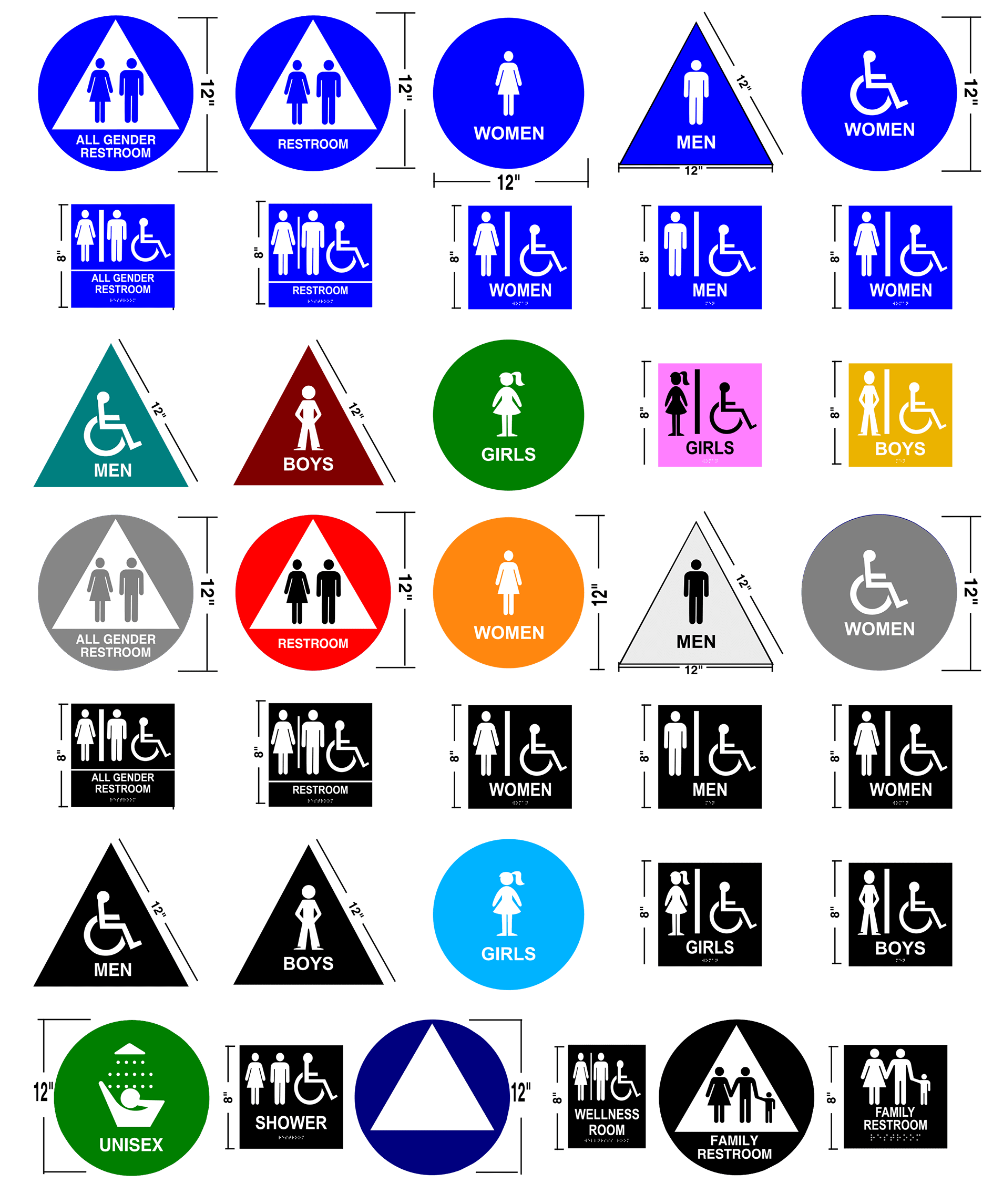Exactly How ADA Signs Boost Access for Everyone
Exactly How ADA Signs Boost Access for Everyone
Blog Article
Exploring the Secret Functions of ADA Signs for Enhanced Access
In the world of accessibility, ADA indicators offer as silent yet powerful allies, making certain that rooms are comprehensive and accessible for people with disabilities. By integrating Braille and responsive aspects, these indications damage obstacles for the aesthetically damaged, while high-contrast shade schemes and clear typefaces cater to diverse aesthetic demands.
Significance of ADA Conformity
Making sure compliance with the Americans with Disabilities Act (ADA) is important for cultivating inclusivity and equal gain access to in public spaces and offices. The ADA, passed in 1990, mandates that all public facilities, companies, and transportation services accommodate individuals with impairments, ensuring they enjoy the exact same rights and chances as others. Compliance with ADA requirements not just fulfills lawful responsibilities however also enhances a company's track record by demonstrating its commitment to diversity and inclusivity.
One of the vital elements of ADA conformity is the implementation of obtainable signage. ADA indicators are designed to make sure that people with specials needs can easily navigate with structures and rooms.
Furthermore, adhering to ADA regulations can reduce the risk of lawful effects and potential fines. Organizations that stop working to adhere to ADA guidelines may deal with suits or penalties, which can be both financially troublesome and destructive to their public picture. Hence, ADA compliance is integral to cultivating an equitable atmosphere for everybody.
Braille and Tactile Aspects
The unification of Braille and tactile aspects right into ADA signs embodies the principles of accessibility and inclusivity. It is generally positioned beneath the corresponding message on signs to make sure that individuals can access the details without aesthetic support.
Responsive aspects expand beyond Braille and consist of elevated symbols and characters. These parts are developed to be discernible by touch, allowing people to recognize space numbers, washrooms, departures, and various other essential areas. The ADA sets particular guidelines concerning the dimension, spacing, and placement of these responsive components to enhance readability and make sure consistency throughout various settings.

High-Contrast Shade Systems
High-contrast color design play an essential function in enhancing the visibility and readability of ADA signs for people with aesthetic problems. These schemes are vital as they optimize the distinction in light reflectance in between message and history, making sure that indicators are quickly noticeable, also from a distance. The Americans with Disabilities Act (ADA) mandates the use of certain color contrasts to suit those with restricted vision, making it a crucial aspect of conformity.
The effectiveness of high-contrast colors hinges on their ability to stand apart in numerous illumination conditions, including dimly lit settings and locations with glare. Generally, dark text on a light background or light text on a dark background is employed to accomplish optimum comparison. As an example, black text on a white or yellow history gives a raw visual distinction that assists in fast acknowledgment and understanding.

Legible Fonts and Text Dimension
When considering the layout of ADA signage, the option of legible fonts and ideal message dimension can not be overemphasized. The Americans with Disabilities Act (ADA) mandates that font styles need to be not italic and sans-serif, oblique, manuscript, highly ornamental, or of uncommon type.
According to ADA guidelines, the minimal message height should be 5/8 inch, and it should increase proportionally with viewing range. Uniformity in text dimension contributes to a cohesive visual experience, assisting people in browsing environments efficiently.
In addition, spacing in between letters and lines is integral to legibility. Sufficient spacing prevents characters from appearing crowded, enhancing readability. By adhering to these requirements, designers can dramatically boost availability, guaranteeing that signage offers Discover More Here its desired purpose Visit This Link for all people, no matter of their aesthetic abilities.
Efficient Positioning Techniques
Strategic positioning of ADA signage is necessary for taking full advantage of ease of access and making sure conformity with lawful requirements. Appropriately positioned signs assist people with handicaps efficiently, assisting in navigation in public spaces. Key considerations include elevation, distance, and presence. ADA guidelines specify that indicators ought to be placed at an elevation between 48 to 60 inches from the ground to ensure they are within the line of sight for both standing and seated people. This typical elevation variety is essential for inclusivity, allowing mobility device customers and people of differing heights to access info easily.
Furthermore, indicators should be positioned adjacent to the lock side of doors to enable simple recognition prior to entrance. Uniformity in indicator placement throughout a facility boosts predictability, reducing complication and enhancing overall individual experience.

Conclusion
ADA signs play an essential role in advertising accessibility by integrating features that deal with the needs of individuals with specials needs. These components jointly foster an inclusive setting, emphasizing the relevance of ADA compliance in wikipedia reference making sure equivalent gain access to for all.
In the realm of accessibility, ADA signs offer as quiet yet powerful allies, ensuring that rooms are inclusive and navigable for people with handicaps. The ADA, enacted in 1990, mandates that all public centers, employers, and transportation services suit people with disabilities, ensuring they appreciate the very same civil liberties and possibilities as others. ADA Signs. ADA indicators are created to make certain that people with disabilities can quickly navigate through buildings and areas. ADA guidelines stipulate that indicators need to be installed at a height between 48 to 60 inches from the ground to ensure they are within the line of sight for both standing and seated individuals.ADA indicators play a crucial duty in promoting accessibility by incorporating attributes that deal with the demands of people with specials needs
Report this page